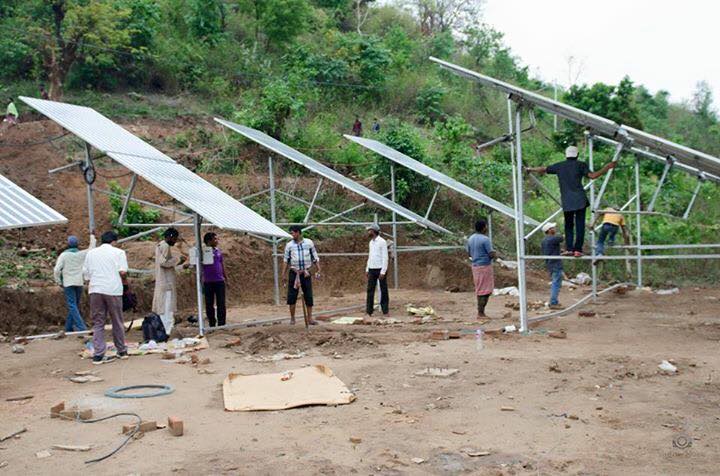
Does India Really Need Offshore Wind
December 15, 2016Another Solar Railway Project Is On Track In India
December 20, 2016More and More Indian Villages are Now Becoming Energy-Independent
Located at the foot of Ayodhya hills, in the Purulia district of West Bengal, Pandri was the first village in India to be illuminated using solar energy. We at Greenworldinvestor have always about the benefits of using solar power especially over fossil fuel. A large population of the rural India still lives in darkness and most of the villagers depend on kerosene lit lamps for their day to day chores. This is not only ruining their health, but is also depriving them of the basic amenities in life.
“Kerosene is sold at Rs 40 per litre in the market. Now the money will be saved, thanks to the solar lamps. We are really grateful to the solar aid,” said Kasinath Mahata, one of the villagers.
Source: Indiatoday
While Pandri was helped by an NGO The Art of Living in India, many companies have voluntarily taken up the noble cause. The villagers pay a small monthly amount to sustain the proper functioning and maintenance of the solar system. This solar system has 72 solar panels spread across 2,000 square feet and provides electricity to 80 homes. The village now has solar pumps, solar lamps and fans, solar power-run rice hulling machine. Many of the villagers’ everyday problems have been solved. The villagers can now farm well and more often when compared to the earlier days. Having a lighting structure helps children to read and women to do their household chores.
Another village called Dharnai reported being energy independent back in 2014. This village in Bihar now has a 100 kW solar-powered micro grid that takes care of the village’s energy needs. With an ambitious target of 100 GW of solar installations by 2022, the concept of micro grid is also fast catching up in India. Village micro grids are becoming popular in the Asian and African countries, since these villages are unable to afford expensive grid connected electricity. India has plans to set up 10,000 solar, wind and biomass-based power projects in five years based around this concept to help the rural population in India. The Union Ministry of MNRE released a draft policy on micro and mini grids that will run on renewable energy sources like solar and wind energy, and hydro and biomass plants. The average capacity of each project is estimated at 50KW. Hence the government is aiming at installing 500 MW of total capacity.


